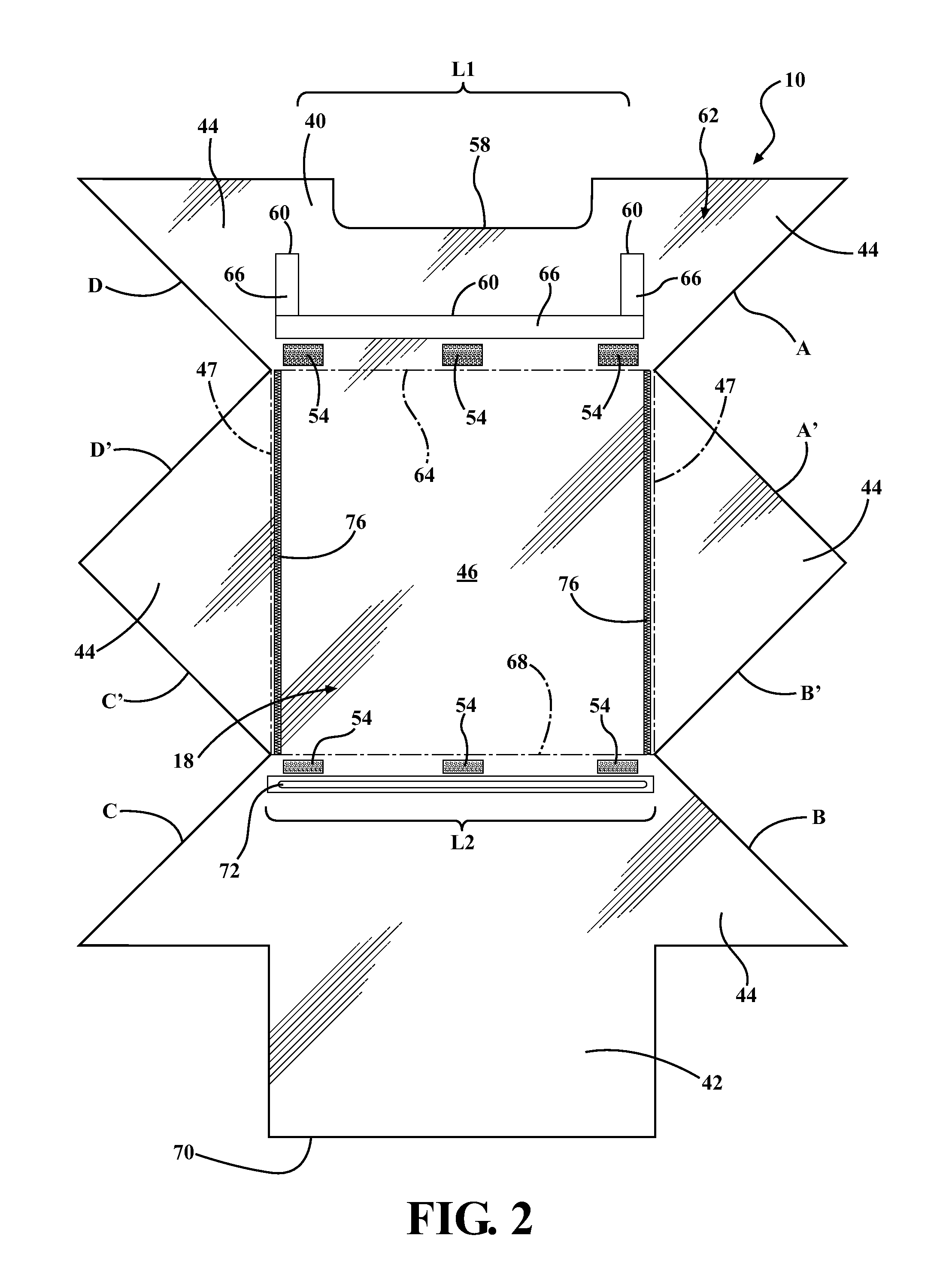Sterile radiological imaging unit drape and method of providing a sterile surface therewith
a sterile surface and radiological imaging technology, applied in the field of surgical drapes, can solve the problems of infection, estimated 100,000 deaths, and known infection risk that can be caused, and achieve the effect of reducing the cost of hospitalization
- Summary
- Abstract
- Description
- Claims
- Application Information
AI Technical Summary
Benefits of technology
Problems solved by technology
Method used
Image
Examples
Embodiment Construction
[0027]Referring in more detail to the drawings, FIG. 1 illustrates a sterile surgical C-arm radiological imaging unit drape, referred to hereafter as imaging drape 10, constructed in accordance with one aspect of the invention. The imaging drape 10 is shown attached, in a collapsed position, to a standard patient drape 12 to facilitate providing and maintaining a sterile outer surface about a portion of a C-arm type radiological imaging unit 14, and particularly about a distal end portion 16 of the imaging unit 14. The imaging drape 10 has a wall 18 providing an enclosure constructed of a flexible, tear and puncture-resistant material, such as a clear plastic material, for example, wherein the imaging drape 10 is economical in construction, and thus, is well suited to be disposed after use. The imaging drape 10 provides a quick and easy mechanism in which to reliably ensure a sterile surgical theater is maintained throughout a surgical procedure, at least with regard to a potential ...
PUM
 Login to View More
Login to View More Abstract
Description
Claims
Application Information
 Login to View More
Login to View More - R&D
- Intellectual Property
- Life Sciences
- Materials
- Tech Scout
- Unparalleled Data Quality
- Higher Quality Content
- 60% Fewer Hallucinations
Browse by: Latest US Patents, China's latest patents, Technical Efficacy Thesaurus, Application Domain, Technology Topic, Popular Technical Reports.
© 2025 PatSnap. All rights reserved.Legal|Privacy policy|Modern Slavery Act Transparency Statement|Sitemap|About US| Contact US: help@patsnap.com



